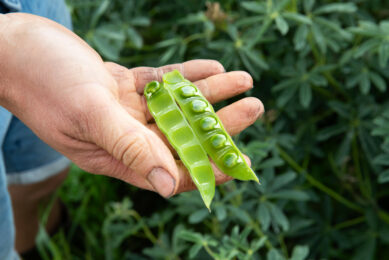Udder health: Harnessing the power of postbiotics (Part 2)
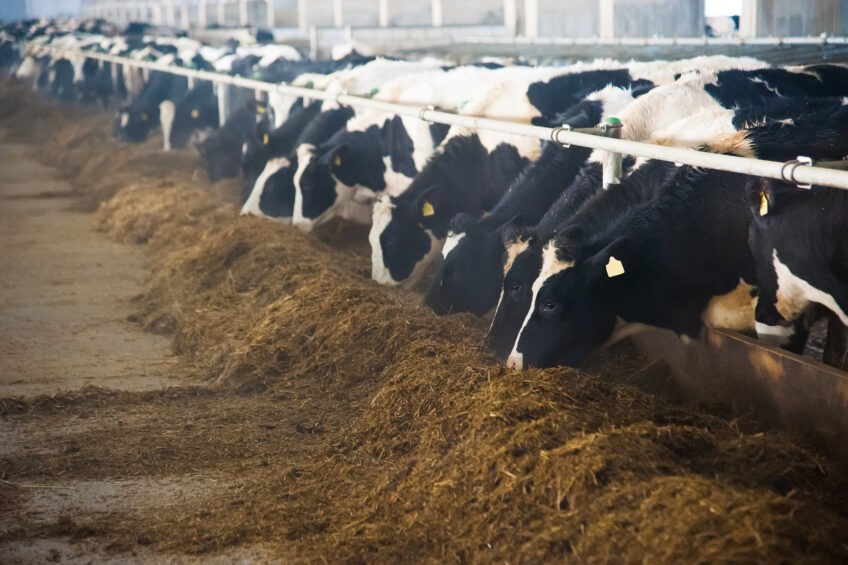
Welcome back to our exploration of udder health in dairy cows. In Part 1, we examined the intricate connections between nutrition and immunity, and how this may affect mastitis occurrence in a dairy cow. Now, we shift our focus to an innovative frontier – postbiotic feed additives. Join us as we explore compelling research showcasing the positive impact of postbiotics on reducing mastitis incidence and supporting overall udder health. Let’s dive into the realm of preventative nutritional interventions and their potential to revolutionise dairy operations.
Postbiotics can have a positive impact on reducing mastitis
Our goal is to feed the immune system in a way that helps maintain udder health. Incorporating the key nutrients we discussed in Part 1 (e.g., vitamins, minerals, and amino acids) can be crucial and impactful. However, we can go a step beyond and incorporate feed additives as supplements to get additional beneficial effects.
Nutritional interventions that emphasise the immune system and prevention, rather than curing mastitis, have been of great interest to researchers, feed companies, and producers, especially to reduce antibiotic use in dairy operations. This is where a natural postbiotic feed additive comes in. Research has shown the direct benefits of feeding a postbiotic feed additive to dairy cows on their udder health.
Promising results concerning the positive effects on udder health (e.g., reduced mastitis incidence and somatic cells scores) of postbiotic feed additives, specifically a commercially available Saccharomyces cerevisiae fermentation product (SCFP), were emerging from its use in the field and were first officially reported by Dr Jim Ferguson (University of Pennsylvania School of Veterinary Medicine) in 2018. He observed a reduction of both mastitis incidence and monthly DHI somatic cells scores in dairies using the product for a full year around the US compared to their previous year of operation.
To better understand its mechanism of action, Dr Juan Loor (University of Illinois) conducted a study to evaluate the impact of the same SCFP postbiotic during an experimentally induced case of clinical mastitis. Cows were either fed a control diet or a diet supplemented with the SCFP postbiotic additive. They were then infected in the right rear quarter with 2500 CFU of Streptococcus uberis, a common environmental mastitis pathogen. After 36 hours udder tissue samples were collected, and antibiotic treatment started.
At the end of the challenge (36 hours post infection) the somatic cell count of the infected quarter was fourfold greater in control cows compared to those that consumed the postbiotic feed additive. This was due to greater pathogen killing capacities of their immune cells, and an increase resistance to damage of their udder tissue compared to control cows. These boosted defenses allowed postbiotic fed cows to maintain higher feed intake and milk yield both during the challenge and in the month following it.
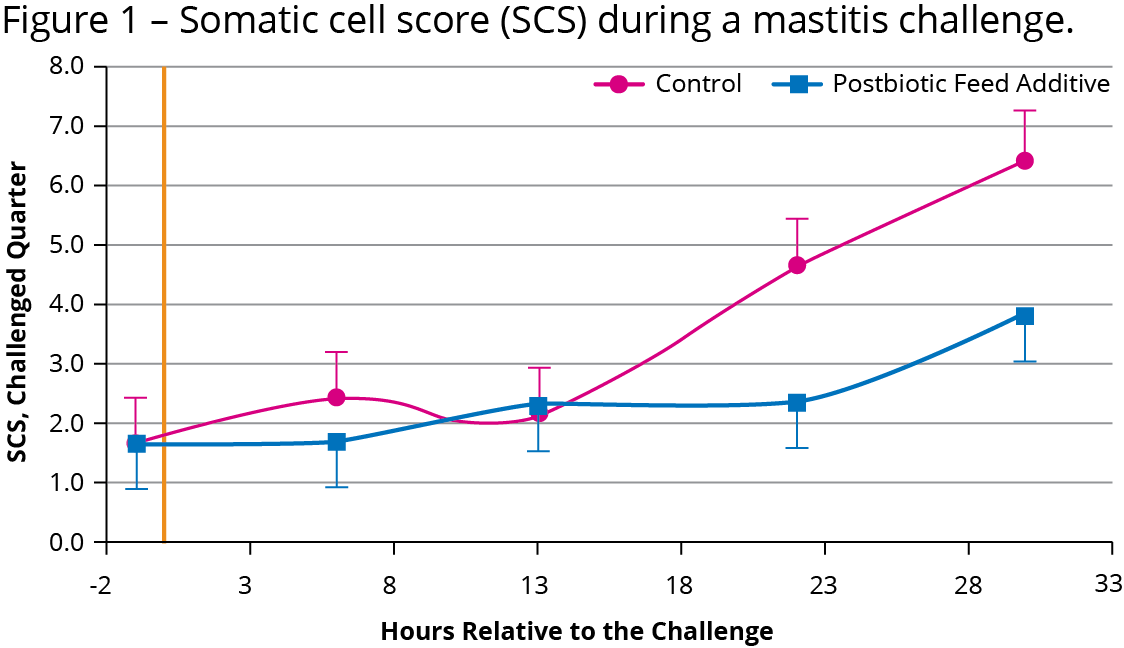 Heat stress can also compromise the reproduction, productivity, and health of a dairy cow. Among these negative effects, the decreased milk production and increased bulk milk SCC during summer are the most recognised and directly related to udder health. For example, Dr Lance Baumgard’s lab (Iowa State University) included the previously studied SCFP postbiotic feed additive in dairy cows’ diet and then subjected them to a week-long heat stress challenge via electric heat blankets.
Heat stress can also compromise the reproduction, productivity, and health of a dairy cow. Among these negative effects, the decreased milk production and increased bulk milk SCC during summer are the most recognised and directly related to udder health. For example, Dr Lance Baumgard’s lab (Iowa State University) included the previously studied SCFP postbiotic feed additive in dairy cows’ diet and then subjected them to a week-long heat stress challenge via electric heat blankets.
Compared to control cows not fed the postbiotic additive and also subjected to heat stress, SCFP fed cows had almost 50% lower plasma cortisol, the stress related and immune suppressant hormone, and higher amounts of immune cells in their blood (9-26% more, depending on the cells considered). So is no surprise that postbiotic fed cows had a 36% lower somatic cell count during the intense heat stress challenge.
Postbiotics are a key element to udder health and beyond
Nutrition plays a vital role in the functionality of a cow’s immune system. It works synergically with the cow’s physiology to maintain its overall health and optimal immune strength.
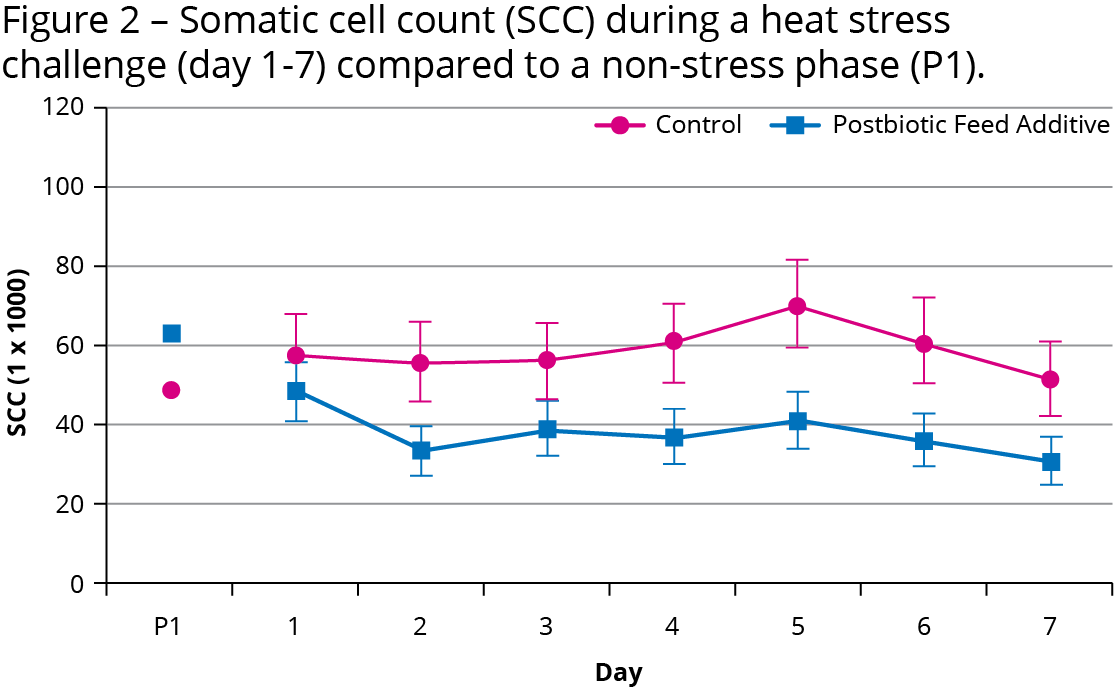 Deficiencies in key nutrients will greatly reduce dairy cows’ immune defenses, so feeding to requirements, without cutting corners, must be the basis of every dairy operation. However, new research shows that targeted supplementation can boost immune function beyond what is considered normal or average. This allows herds to better tolerate common production stresses and udder challenges, for overall health and performance.
Deficiencies in key nutrients will greatly reduce dairy cows’ immune defenses, so feeding to requirements, without cutting corners, must be the basis of every dairy operation. However, new research shows that targeted supplementation can boost immune function beyond what is considered normal or average. This allows herds to better tolerate common production stresses and udder challenges, for overall health and performance.
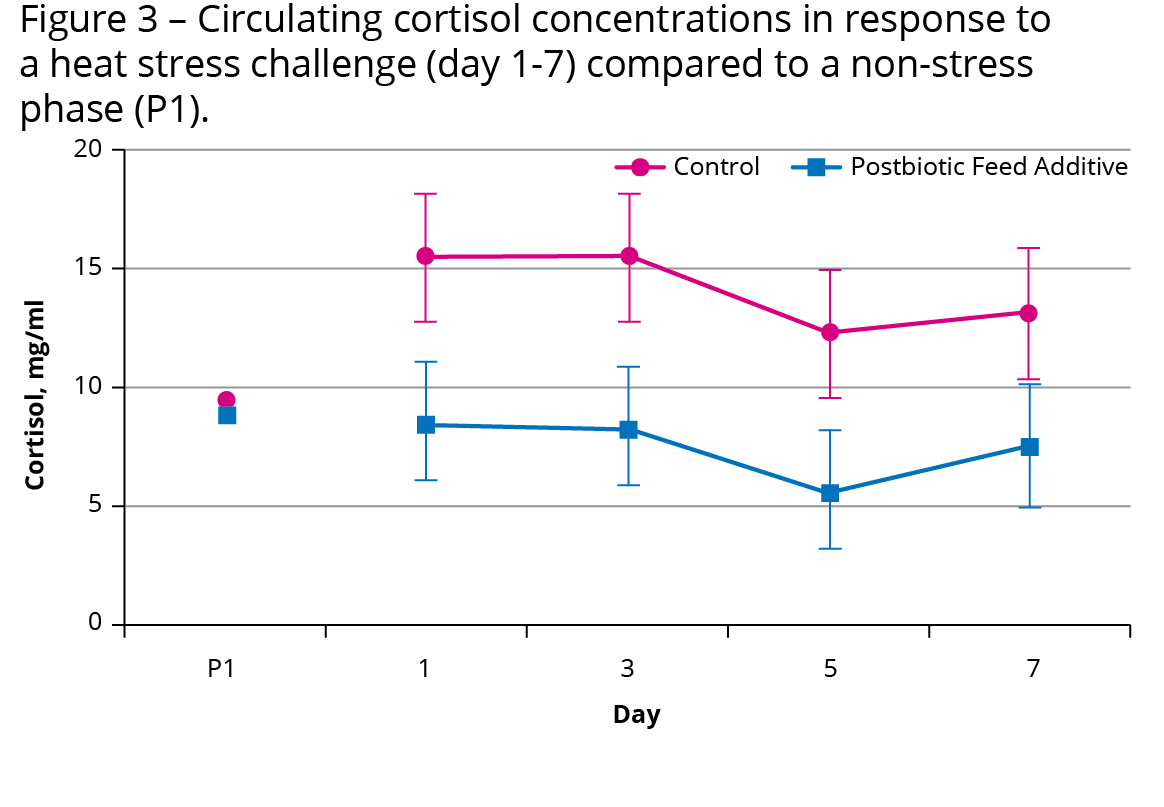 A SCFP postbiotic additive has been proven to maintain and enforce better udder health as it readies the immune system to start a strong and successful response to challenges, while it prevents damages caused by pathogens and the inflammation itself.
A SCFP postbiotic additive has been proven to maintain and enforce better udder health as it readies the immune system to start a strong and successful response to challenges, while it prevents damages caused by pathogens and the inflammation itself.
As the immune system does not solely focus on defending the mammary gland, this nutritional strategy focused on boosting udder health, will have great effects on all other systems, generating returning benefits in reproduction, and gut, feet, and respiratory health.
Results are in fact already coming up in scientific literature. Young calves supplemented with the postbiotic feed additive have increase resistance to a respiratory viral challenge, or a viral-bacteria coinfection, and maintain better health during challenges with intestinal pathogens, both bacterial and parasitic.
Transitioning cows that consumed the SCFP postbiotic starting dry-off or close-up have lower inflammatory and metabolic challenges with improvement in lactation performances. And last but not least, recent results are shedding light on the role of postbiotics additives in preventing and mitigating digital dermatitis in both research challenge settings, and commercial realities.
Join 13,000+ subscribers
Subscribe to our newsletter to stay updated about all the need-to-know content in the dairy sector, two times a week.






